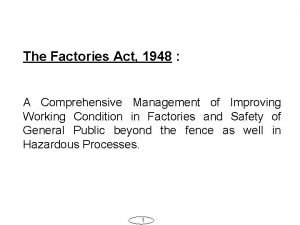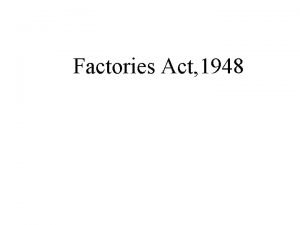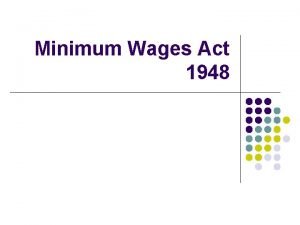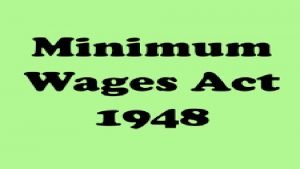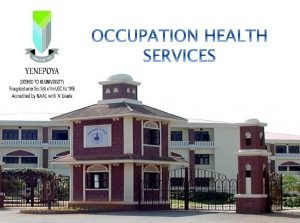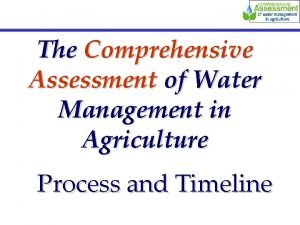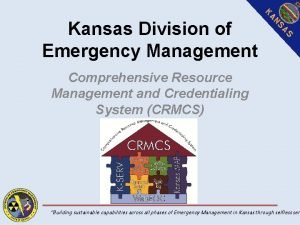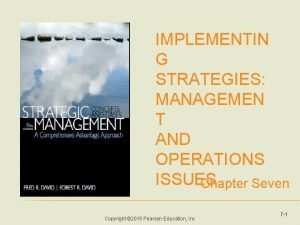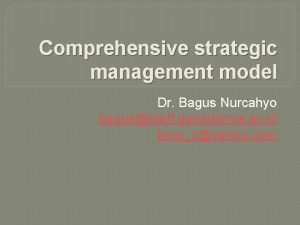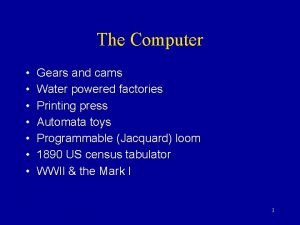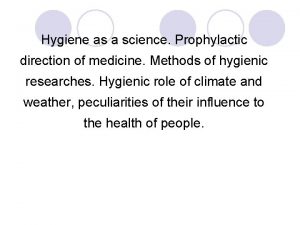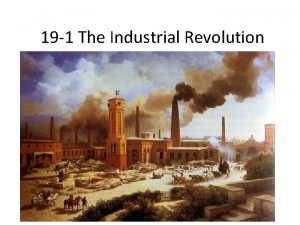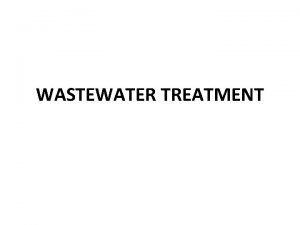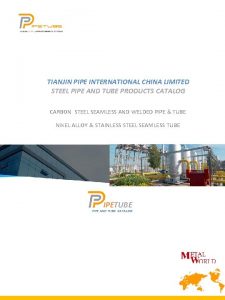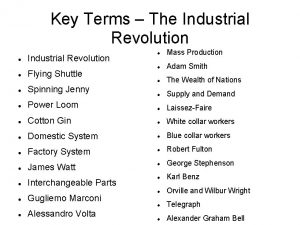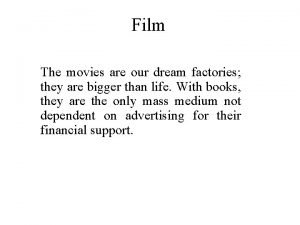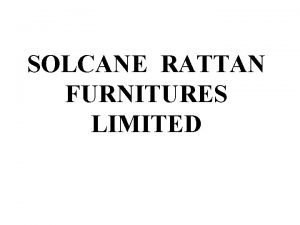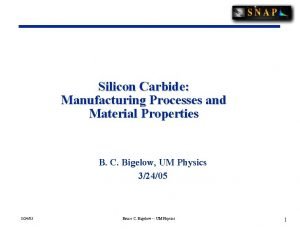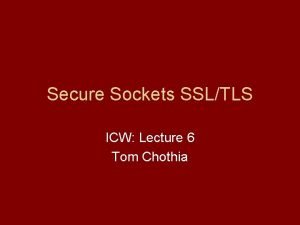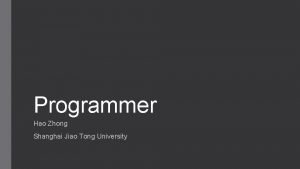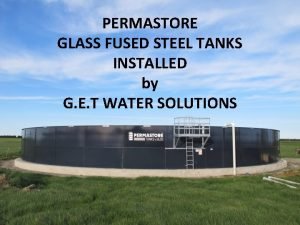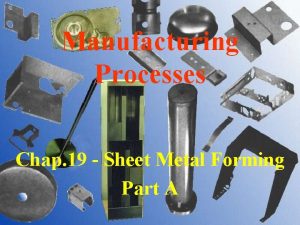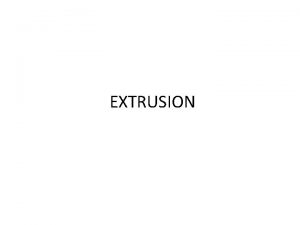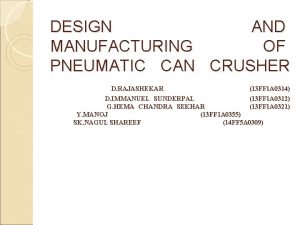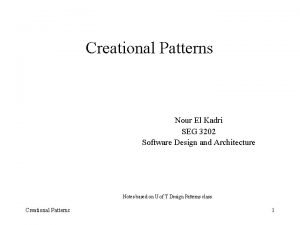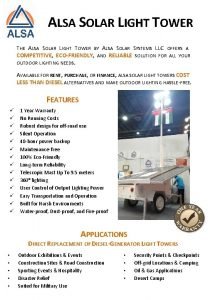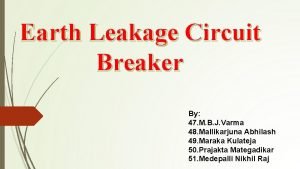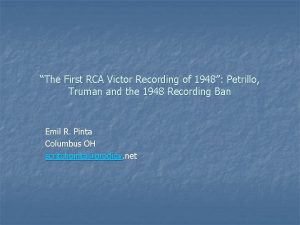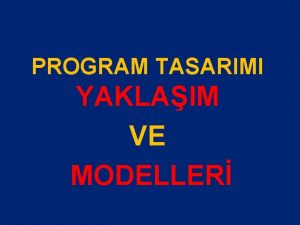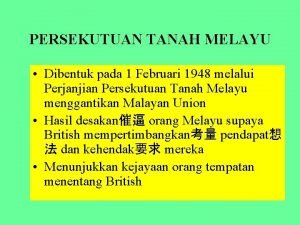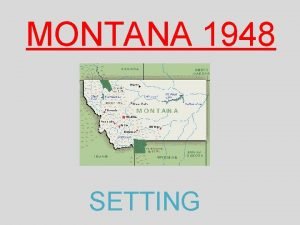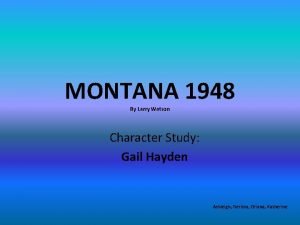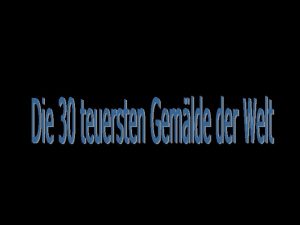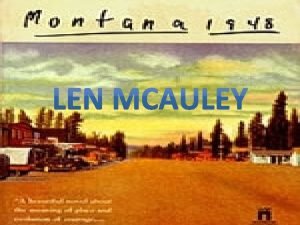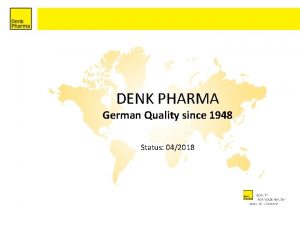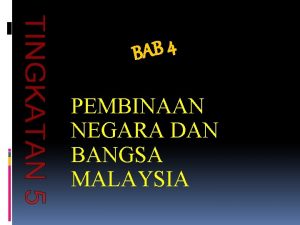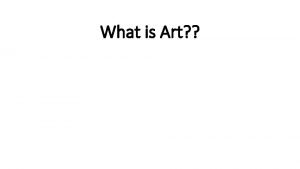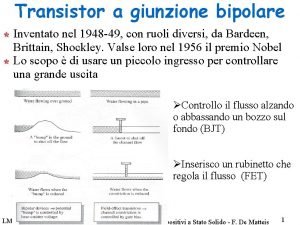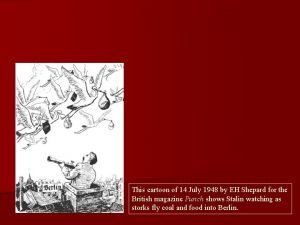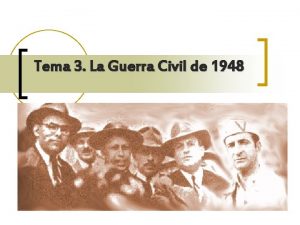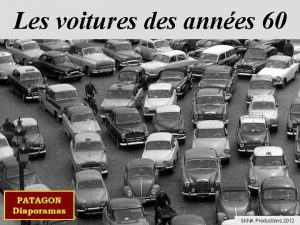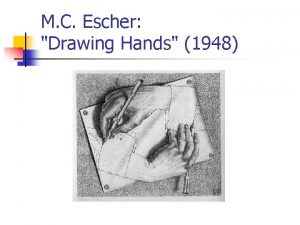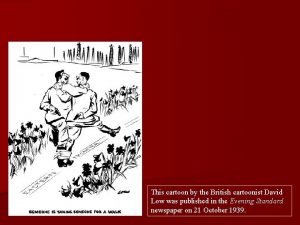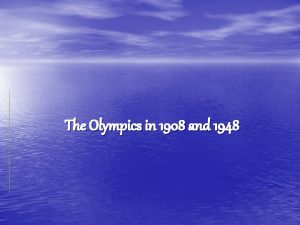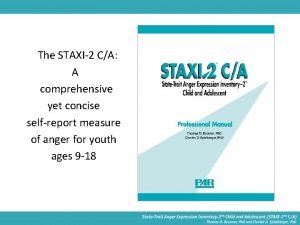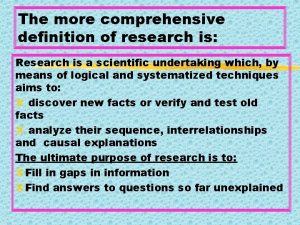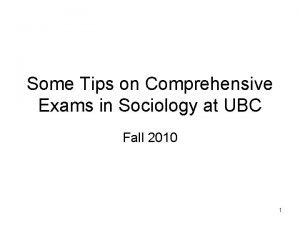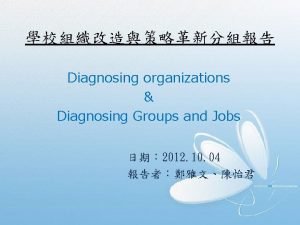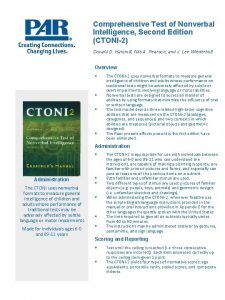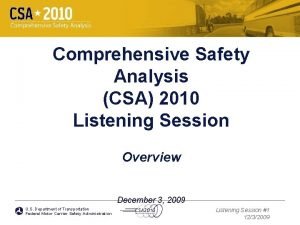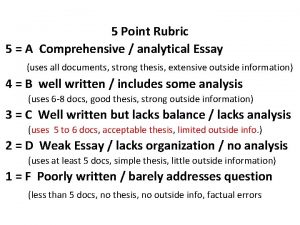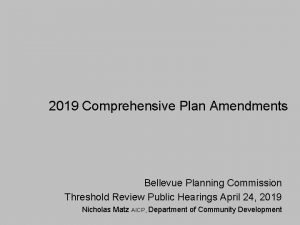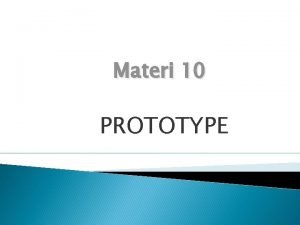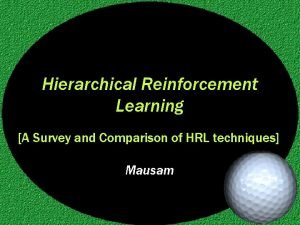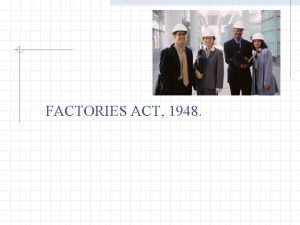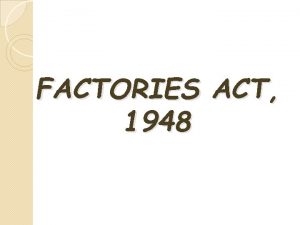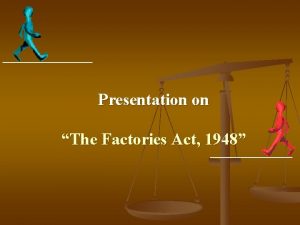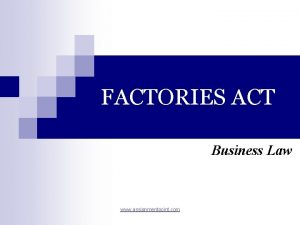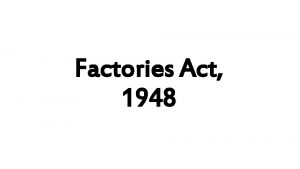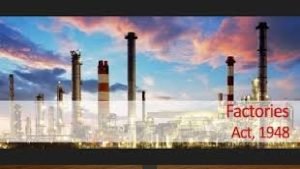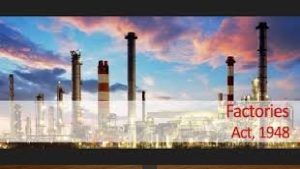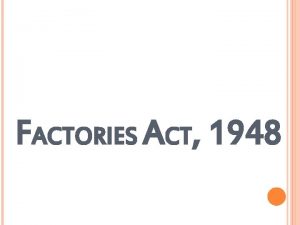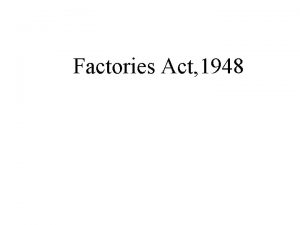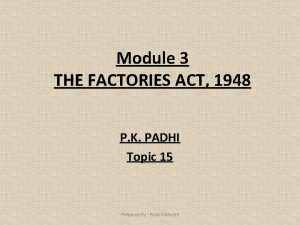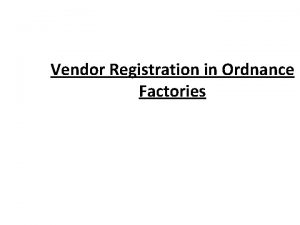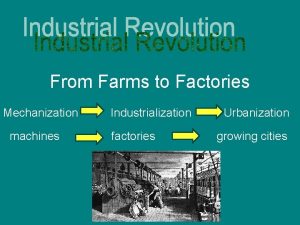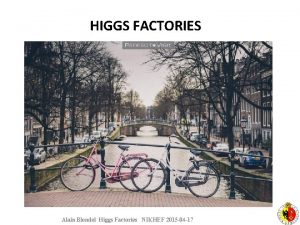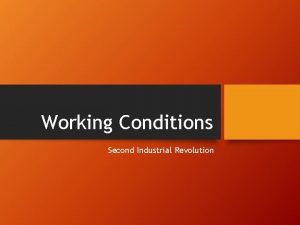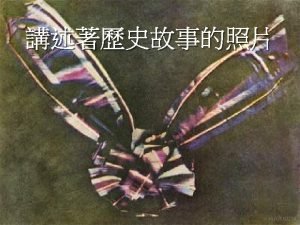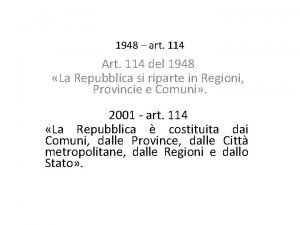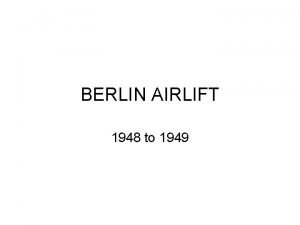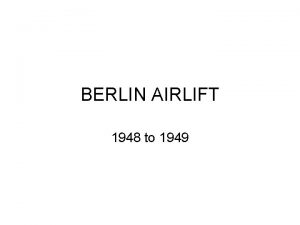The Factories Act 1948 A Comprehensive Management of

































![DANGEROUS MACHINES [SECTION 23(2)] Section -54. Employment of young persons on dangerous machines : DANGEROUS MACHINES [SECTION 23(2)] Section -54. Employment of young persons on dangerous machines :](https://slidetodoc.com/presentation_image/224677628d80f4abf0bf0d2eef4279be/image-34.jpg)



























































![Precautions against dangerous fumes [Section-36] Rule-59. Minimum dimensions of manholes In every factory - Precautions against dangerous fumes [Section-36] Rule-59. Minimum dimensions of manholes In every factory -](https://slidetodoc.com/presentation_image/224677628d80f4abf0bf0d2eef4279be/image-94.jpg)






![[SECTION 37(5)] Rule-60. Exemptions (1) The requirements of sub-section (4) of Section 37 shall [SECTION 37(5)] Rule-60. Exemptions (1) The requirements of sub-section (4) of Section 37 shall](https://slidetodoc.com/presentation_image/224677628d80f4abf0bf0d2eef4279be/image-101.jpg)






![MEANS OF ESCAPE IN CASE OF FIRE [SECTION 38(3)] Rule-61 -Fire. (1) Processes, equipment, MEANS OF ESCAPE IN CASE OF FIRE [SECTION 38(3)] Rule-61 -Fire. (1) Processes, equipment,](https://slidetodoc.com/presentation_image/224677628d80f4abf0bf0d2eef4279be/image-108.jpg)




































- Slides: 144

The Factories Act, 1948 : A Comprehensive Management of Improving Working Condition in Factories and Safety of General Public beyond the fence as well in Hazardous Processes. 1

Statement of Objects and Reasons of The Factories Act, 1948 (63 of 1948) : The present Act not only consolidates but also amends the law relating to factories. It thus introduces certain important new features. Law relating to Working Conditions was for the first time enacted in 1881, known as the Factories Act, which was followed by another Act ten years later. In 1911, both the Acts were repealed and a new Act was brought into force. This too was soon found to be inadequate to meet the needs of labour which had grown manifold of then, and so Act XXV of 1934. Experience of the working of this Act revealed a number of defects and weaknesses which hampered effective administration, and so the necessity of the Factories Act of 1948. September, 2

Statement of Objects and Reasons of Factories (Amendment) Act, 1976 (94 of 1976) : The main object of the Factories Act, 1948 is to ensure adequate safety measures and to promote the health and welfare of workers employed in factories. Government, is, therefore initiating various measures from time to ensure that adequate standards of safety, health and welfare achieved at production and productivity, an appropriate work culture conductive to safety, health and happiness of workers has to be evolved in the factories. September, 3

Contd…………. To achieve these objectives more effectively it has become necessary to amend the Factories Act. The amendments proposed to be made in the Act by the Bill mainly relate to (1) the modification of the definition of the term ‘worker’ so as to include within its meaning contract labour employed in any manufacturing process, (2) improvement of the provisions in regard to safety and appointment of Safety Officers, (3) reduction of the minimum number of women employees, for the purpose of providing crèches by employers from fifty to thirty, and (4) provisions for inquiry in every case of a fatal accident. 4

Statement of Objects and Reasons of Factories (Amendment) Act, 1987 (20 of 1987) : The Factories Act, 1948 provides for the health, safety, welfare and other aspects of workers in factories. The Act is enforced by the State Governments through their Factory Inspectorates. The Act also empowers the State Governments to frame Rules, so that the local conditions prevailing in the State are appropriately reflected in the enforcement. The Act was last amended in 1976 for strengthening the provisions relating to safety and health at work, extending the scope of the definition of “workers”, providing for statutory health surveys, and requiring appointment of Safety Officers in large factories. 5

Contd…………. 2. After the last amendment to the Act, there has been substantial modernization and innovation in the industrial field. Several chemical industries have come up which deal with hazardous and toxic substances. This has brought in its train problems of industrial safety and occupational health hazards. It is therefore, considered necessary that the Act may be appropriately amended among other things, to provide specifically for the safeguards to be adopted against use and handling of hazardous substances by the occupiers of factories and the laying down of emergency standards and measures. The amendments would also include procedures for sitting of hazardous industries to ensure that hazardous and polluting industries are not set up in areas where they can cause adverse effects on the general public. Provisions has also been made for the workers’ participation in safety management. 3. Opportunity has been availed of to make the punishment provided in the Act stricter and certain other amendments found necessary in the implementation of the Act. 6

Section-7 A. General Duties of the Occupier : (1) Every occupier shall ensure, so far as is reasonably practicable, the health, safety and welfare of all workers while they are at work in the factory. (2) Without prejudice to the generality of the provisions of sub-section (1), the matters to which such duty extends, shall include : (a) The provisions and maintenance of plant and systems of work in the factory that are safe and without risks to health; (b) The arrangements in the factory for ensuring safety and absence of risks to health in connection with the use, handling, storage and transport of articles and substances; 7

Contd…………. (c) The provisions of such information, instruction, training and supervision as are necessary to ensure the health and safety of all workers at work; (d) The maintenance of all places of work in the factory in a condition that is safe and without risks to health and the provision and maintenance of such means of access to, and egress from, such places as are safe and without such risks; (e) The provision, maintenance or monitoring of such working environment in the factory for the workers that is safe, without risks to health and adequate as regards facilities and arrangements for their welfare at work. 8

Contd…………. (3) Except in such cases as may be prescribed, every occupier shall prepare, and, as often as may be appropriate, revise, a written statement of his general policy with respect to the health and safety of the workers at work and the organization and arrangements for the time being in force for carrying out that policy, and to bring the statement and any revision thereof to the notice of all workers in such manner as may be prescribed. 9

7 -B. General duties of manufacturers, etc. , as regards articles and substances for use in factories. (1) Every person who designs, manufactures, imports or supplies any article for use in any factory shall(a) ensure, so far as is reasonably practicable, that the article is so designed and constructed as to be safe and without risks to the health of the workers when properly used; (b) carry out or arrange for the carrying out of such tests and examination as may be considered necessary for the effective implementation of the provisions of clause (a); (c) take such steps as may be necessary to ensure that adequate information will be available; 10

Contd…………. (c) Take such steps as may be necessary to ensure that adequate information will be available : (i) in connection with the use of the article in any factory; (ii) about the use for which it is designed and tested; and (iii) about any conditions necessary to ensure that the article, when put to such use, will be safe, and without risks to the health of the workers: 11

Contd…………. Provided that where an article is designed or manufactured outside India, it shall be obligatory on the part of the importer to see(a) that the article conforms to the same standards if such article is manufactured in India, or (b) if the standards adopted in the country outside for the manufacture of such article is above the standards adopted in India, that the article conforms to such standards 12

(2) Every person, who undertakes to design or manufacture any article for use in any factory, may carry out or arrange for the carrying out of necessary research with a view to the discovery and, so far as is reasonably practicable, the elimination or minimization of any risks to the health or safety of the workers to which the design or article may give rise. (3) Nothing contained in sub-sections (1) and (2) shall be construed to require a person to repeat the testing, examination or research which has been carried out otherwise than by him or at his instance in so far as it is reasonable for him to rely on the results thereof for the purposes of the said sub-sections. 13

(4) And duty imposed on any person by sub-sections (1) and (2) shall extend only to things done in the course of business carried on by him and to matters within his control. (5) Where a person designs, manufactures, imports or supplies an article on the basis of a written undertaking by the user of such article to take the steps specified in such undertaking to ensure, so far as is reasonably practicable, that the article will be safe and without risks to the health of the workers when properly used, the undertaking shall have the effect of relieving the person designing, manufacturing, importing or supplying the article from the duty imposed by clause (a) of sub-section (1) to such extent as is reasonably having regard to the terms of the undertaking. 14

(6) For the purposes of this section, an article is not to be regarded as properly used if it is used without regard to any information or advice relating to its use which has been made available by the person who has designed, manufactured, imported or supplied the article. Explanation: -For the purposes of this section, "article" shall include plant and machinery. 15

Provisions relating to Safety Section-21. Fencing of machinery. – (1) In every factory the following, namely(i) every moving part of a prime-mover and every flywheel connected to a prime-mover, whether the primemover or flywheel is in the engine-house or not; (ii) the headrace and tailrace of every water-wheel and water-turbine; (iii) any part of a stock bar which projects beyond the head stock of a lathe; and

(iv) unless they are in such position or of such construction as to be safe to every person employed in the factory as they would be if they were securely fenced, the following, namely: (a) every part of an electric generator, a motor or rotary converter; (b) every part of transmission machinery; and (c) every dangerous part of any other machinery; shall be securely fenced by safeguards of a substantial construction which shall be constantly maintained and kept in position while the parts of machinery they are fencing, are in motion or in use: 17

Provided that for the purpose of determining whether any part of machinery in such position or is of such construction as to be safe as aforesaid, account shall not be taken of any occasion when(i) it is necessary to make an examination of any part of the machinery aforesaid while it is in motion or, as a result of such examination to carry out lubrication or other adjusting operation while the machinery is in motion, being an examination of operation which it is necessary to be carried out while that part of the machinery is in motion. or 18

(ii) in the case of any part of a transmission machinery used in such process as may be prescribed (being a process of a continuous nature, the carrying on of which shall be or is likely to be substantially interfered with by the stoppage of that part of the machinery), it is necessary to make an examination of such part of the machinery while it is in motion or, as a result of such examination, to carry out any mounting or shipping of belts or lubrication, or other adjusting operation while the machinery is in motion, and such examination or operation is made or carried out in accordance with the provisions of sub-section (1) of section 22. 19

(2) The State Government may by rules prescribe such further precautions as it may consider necessary in respect of any particular machinery or part thereof or exempt, subject to such condition as may be prescribed, for securing the safety of the workers, any particular machinery or part thereof from the Provisions of this section. 20

Rule- 52. Safety precautions (1) Without prejudice to the provision of Section 21(1) of the Factory Act, 1948, in regard to the fencing of machines, the following additional provisions specified in the schedules annexed hereto shall apply to machinery noted in each schedule. The provisions of this rule shall come into force from July 1, 1951, in the case of factories registered before April 1, 1949. (2) The fences and other devices for protection shall be so constructed and designed as to render it impossible for any person to pass between them and a moving part and also in such manner as to give protection to a person oiling, cleaning or otherwise attending to machinery and to all persons, who may be in the neighborhood of moving part while it is in motion. 21

(3) In every fence the spaces between the fence framing shall be completely and securely fitted in with panels of sheet metal, expanded metal or other stout and durable material, unless the frame members of the fence are, in the opinion of the Inspector, sufficiently close together to serve the same purpose. When panels are fitted, the boards shall be fitted to all fences, which stand upon the ground or in a wall-way, scaffold or platform. (4) In case where a fixed fence cannot be used to give protection from flying chips or the like, the manager shall provide portable screens where these can be effectively used ; and where screens not adequate protection, he shall provide goggles for each worker within range. 22

(5) The guard and other appliances required by the rules shall be - (a) maintained in a efficient state, (b) constantly kept in position while the machinery is in motion, and (c) so adjusted as to enable the work to be done without unnecessary risk. (6) If the driving machinery is situated in a room separated from the driven machinery room by a high wall, an inspection door 4'x 4' shall be provided in the wall and further a bell arrangement shall be provided under the control of the person attending the driven machinery. 23

Without prejudice to the provisions of sub-section (1) of Section-21 in regard to the fencing of machine the further precautions specified in the Schedules annexed hereto shall apply to the machines noted in each schedule. (Model Rule) Schedule-I : Textile machinery except machinery used in jute mills; Schedule-II : Cotton Ginning; Schedule-III : Wood working machinery; Schedule-IV : Rubber mills; Schedule-V : Centrifugal Machines; Schedule-VI : Power Press; Schedule-VII : Shears, Slitters and Guillotine Machines; 24

Rule- 52 A. Building and Structure: No building, wall, chimney, bridge, tunnel, road, gallery, stairway, ramp, floor platform- staging or other structure, whether of a permanent or temporary character, shall be constructed, situated or maintained in any factory in such manner as to cause risk of bodily injury. Rule-52 B. Machinery and Plant. : No machinery, plant or equipment shall be erected, situated, operated or maintained in any factory in such a manner as to cause risk of bodily injury. Rule-52 C. Method of work : No process or work shall be carried in any factory in such a manner as to cause risk of bodily injury. Rule-52 D. Stacking or storing of Materials etc : No material or equipment shall be stacked or stored in such a manner as to cause risk of bodily injury. 25

Section-22. Work on or near machinery in motion. – (1) Where in any factory it becomes necessary to examine any part of machinery referred to in section 21, while the machinery is in motion, or, as a result of such examination, to carry out(a) in a case referred to in clause (i) of the proviso to sub-section (1) of section 21, lubrication or other adjusting operation; or (b) in a case referred to in clause (ii) of the proviso aforesaid, any mounting or shipping of belts or lubrication or other adjusting operation, 26

While the machinery is in motion, such examination or operation shall be made or carried out only by a specially trained adult male worker wearing tight fitting clothing (which shall be supplied by the occupier) whose name has been recorded in the register prescribed in this behalf and who has been furnished with a certificate of his appointment, and while he is so engaged- (a) such worker shall not handle a belt at a moving pulley unless(i) the belt is not more than fifteen centimeters in width; 27

(ii) the pulley is normally for the purpose of drive and not merely a fly-wheel or balance wheel (in which case belt is not permissible); (iii) the belt joint is either laced or flush with the belt; (iv) the belt, including the joint and the pulley rim, are in good repair; (v) there is reasonable clearance between the pulley and any fixed plant or structure; (vi) secure foothold and, where necessary, secure handhold, are provided for the operator; and (vii) any ladder in use for carrying out any examination or operation aforesaid is securely fixed or lashed or is firmly held by a second person ; 28

(b) without prejudice to any other provision of this Act relating to the fencing of machinery, every set screw, bolt and key on any revolving shaft, spindle, wheel or pinions and all spur, worm and other toothed or friction gearing in motion with which such worker would otherwise be liable to come into contact, shall be securely fenced to prevent such contact. 29

(2) No woman or young person shall be allowed to clean, lubricate or adjust any part of a prime mover or of any transmission machinery while prime-mover or transmission machinery is in motion, or to clean, lubricate or adjust any part of any machine if the cleaning, lubrication or adjustment thereof would expose the woman or young person to risk of injury from any moving part either of that machine or of any adjacent machinery. (3) The State Government may, by notification in the Official Gazette prohibit, in any specified factory or class or description of factories, the cleaning, lubricating or adjusting by any person of specified parts of machinery when those parts are in motion. 30

PRECAUTIONS FOR PERSONS ATTENDING TO MACHINERY - Rule-53. (a) No machinery or shaft in motion shall be cleaned by waste rags or similar material held in hand. (b) Every shafting ladder shall be fitted with either hooks or some effective non-skid device and shall be free from cracks, broken rungs and other defects. When necessary to prevent slipping another worker shall be provided to hold the bottom of the ladder. (c) No person engaged in oiling or adjusting belts or in any work whatsoever "within reach" of transmission machinery or any other machinery which the Inspector considers dangerous, shall be allowed to wear loosely fitting clothes. 31

(d) The occupier shall be responsible for the supply of tight fitting clothing without cost to the workers mentioned in Rule (c) all the time they are at work. (e) Notices or posters in Hindi for the prevention of accidents shall be displayed at conspicuous places in every room of the factory in which machinery is in use. (f) The manager of every factory shall cause the contents of the notices or posters to be explained to each worker in the language understood by him on his first engagement and as often as there is a change in the work performed by him. (g) The register as required in sub-section (1) of Section 22 of the Act shall be in Form No. 25. 32

Section-23. Employment of young persons on dangerous machines. – (1) No young person shall be required or allowed to work at any machine to which this section applies, unless he has been fully instructed as to the dangers arising in connection with the machine and the precautions to be observed, and(a) has received sufficient training in work at the machine, or (b) is under adequate supervision by a person who has a thorough knowledge and experience of the machine. (2) Sub-section (1) shall apply to such machines as may be prescribed by the State Government, being machines which in its opinion are of such a dangerous character that young persons ought not to work at them unless the foregoing requirements are complied with. 33
![DANGEROUS MACHINES SECTION 232 Section 54 Employment of young persons on dangerous machines DANGEROUS MACHINES [SECTION 23(2)] Section -54. Employment of young persons on dangerous machines :](https://slidetodoc.com/presentation_image/224677628d80f4abf0bf0d2eef4279be/image-34.jpg)
DANGEROUS MACHINES [SECTION 23(2)] Section -54. Employment of young persons on dangerous machines : The following machines are hereby prescribed as of such a dangerous character that young persons shall not work at them unless the provisions of Section 23(1) are complied with. Power presses other than hydraulic presses : milling machines used in the metal trades; guillotine machine ; Circular Saw : Platen Printing machines. 34

Section-24. Striking gear and devices for cutting off power. (1) In every factory(a) suitable striking gear or other efficient mechanical appliance shall be provided and maintained and used to move driving belts to and from fast and loose pulleys which form part of the transmission machinery, and such gear or appliances shall be so constructed, placed and maintained so as to prevent the belt from creeping back on to the fast pulley; (b) driving belts when not in use shall not be allowed to rest or ride upon shafting in motion. 35

(2) In every factory suitable devices for cutting off power in emergencies from running machinery shall be provided and maintained in every workroom: Provided that in respect of factories in operation before the commencement of this Act, the provisions of this sub-section shall apply only to workrooms in which electricity is used as power. (3) When a device, which can inadvertently shift from "off" to "on" position, is provided in a factory to cut off power, arrangements shall be provided for locking the device in safe position to prevent accidental starting of the transmission machinery or other machines to which the device it fitted. 36

Section-25. Self-acting machines. No traversing part of a self-acting machine in any factory and no material carried thereon shall, if the space over which it runs is a space over which any person is liable to pass, whether in the course of his employment or otherwise, be allowed to run on its outwards or inward traverse within a distance forty-five centimeters from any fixed structure which is not part of the machine: Provided that the Chief Inspector may permit the continued use of a machine installed before the commencement of this Act which does not comply with the requirements of this section on such conditions for ensuring safety as he may think fit to impose. 37

Section-26. Casing of new machinery (1) In all machinery driven by power and installed in any factory after the commencement of this Act, (a) every set screw, bolt or key on any revolving shaft, spindle, wheel or pinion shall be so sunk, encased or otherwise effectively guarded as to prevent danger; (b) all spur, worm and other toothed or friction gearing which does not require frequent adjustment while in motion shall be completely encased, unless it is so situated as to be as safe as it would be if it were completely encased. 38

(2) Whoever sells or lets on hire or, agent of a seller or hirer, causes or procures to be sold or let on hire, for use in a factory any machinery driven by power which does not comply with the provisions of sub-section (1) or any rules made under sub-section (3), shall be punishable with imprisonment for a term which may extend to three months or with fine which may extend to five hundred rupees or with both. (3) The State Government may make rules specifying further safeguards to be provided in respect of any other dangerous part of any particular machine or class or description of machines. 39

Section-27. Prohibition of employment of women and children near cotton-openers. No woman or child shall be employed in any part of a factory for pressing cotton in which a cotton-opener is at work: Provided that if the feed-end of a cotton-opener is in a room separated from the delivery end by a partition extending to the roof or to such height as the Inspector may in any particular case specify in writing, women and children may be employed on the side of the partition where the feed-end is situated. 40

Section-28. Hoists and lifts. - (1) In every factory(a) every hoist and lift shall be(i) of good mechanical construction, sound material and adequate strength; (ii) properly maintained, and shall be thoroughly examined by a competent person at least once in every period of six months, and a register shall be kept containing the prescribed particulars of every such examination; 41

(b) every hoistway and liftway shall be sufficiently protected by an enclosure fitted with gates, and the hoist or lift and every such enclosure shall be so constructed as to prevent any person or thing from being trapped between any part of the hoist or lift and any fixed structure or moving part; (c) the maximum safe working load shall be plainly marked on every hoist or lift, and no load greater than such load shall be carried thereon; (d) the cage of every hoist or lift used for carrying persons shall be fitted with a gate on each side from which access is afforded to a landing; (e) every gate referred to in clause (b) or clause (d) shall be fitted with inter-locking or other efficient device to secure that the gate cannot be opened except when the cage is at the landing and that the cage cannot be moved unless the gate is closed. 42

(2) The following additional requirements shall apply to hoists and lifts used for carrying persons and installed or reconstructed in a factory after the commencement of this Act, namely: (a) where the cage is supported by rope or chain, there shall be at least two ropes or chains separately connected with the cage and balance weight, and each rope or chain with its attachments shall be capable of carrying the whole weight of the cage together with its maximum load; (b) efficient devices shall be provided and maintained capable of supporting the cage together with its maximum load in the event of breakage of the ropes, chains or attachments; (c) an efficient automatic device shall be provided and maintained to prevent the cage from over-running. 43

(3) The Chief Inspector may permit the continued use of a hoist or lift installed in a factory before the commencement of this Act which does not fully comply with the provisions of sub-section (1) upon such conditions for ensuring safety as he may think fit to impose. (4) The State Government may, if in respect of any class or description of hoist or lift, is of opinion that it would be unreasonable to enforce any requirements of sub-sections (1) and (2), by order direct that such requirement shall not apply to such class or description of hoist or lift. Explanation. -For the purposes of this section, no lifting machine or appliance shall be deemed to be a hoist or lift unless it has a platform or cage, the direction or movement of which is restricted by a guide or guides. 44

Rule- 55. Rules under Sections 28 : - (1) A register shall be opened with the following columns to record particulars of examination of hoists and lifts : (i) Date of examination (ii) Number of hoists and lifts if more than one. (iii) Details of examinations made. (iv) Result of examination (v) Signature of examiner. (vi) Designation and qualifications of the examiner. 45

(2) Exemption of certain hoists and lifts : - In respect of any class or description of hoist or lift specified in the first column of the Schedule, the requirements of Section 28 specified in the second column of said schedule and set opposite to that class or description of hoist or lift shall not apply : SCHEDULE Class or description of hoist or lift requirements which shall not apply (a) Hoist or lifts mainly used for raising material for charging blast furnaces or lime kilns (b) Hoists not connected with mechanical power and which are not used for carrying persons Sub-section (1) (b) in so far as it requires a gate at the bottom landing; subsection 1(e) Sub-section (1) (b) in so far as it requires the hoist way or lift way enclosure to be so constructed as to prevent any person or thing from being trapped between any part of the hoist or lift and any fixed structure or moving part sub-section 1(e) 46

Section- 29. Lifting machines, chains, ropes and lifting tackles. - (1) In any factory the following provisions shall be complied with in respect of every lifting machine (other than a hoist and lift) and every chain, rope and lifting tackle for the purpose of raising or lowering persons, goods or materials: (a) all parts, including the working gear, whether fixed or movable, of every lifting machine and every chain, rope or lifting tackle shall be- (i) of good construction, sound material and adequate strength and free from defects; (ii) properly maintained; and 47

(iii) thoroughly examined by a competent person at least once in every period of twelve months, or at such intervals as the Chief Inspector may specify in writing, and a register shall be kept containing the prescribed particulars of every such examination; (b) no lifting machine and no chain, rope or lifting tackle shall, except for the purpose of test, be loaded beyond the safe working load which shall be plainly marked there on together with an identification mark and duly entered in the prescribed register; and where this is not practicable, a table showing the safe working load of every kind and size of lifting machine or chain, rope of lifting tackle in use, shall be displayed in prominent position on the premises; 48

(c) while any person is employed or working on or near the wheel track of a traveling crane in any place where he would be liable to be struck by the crane, effective measures shall be taken to ensure that the crane does not approach within six meters of that place. (2) The State Government may make rules in respect of any lifting machine or any chain, rope or lifting tackle used in factories(a) prescribing further requirements to be complied with in addition to those set out in this section ; (b) providing for exemption from compliance with all or any of the requirements of this section, where in its opinion, such compliance is unnecessary or impracticable. 49

(3) For the purposes of this section a lifting machine or a chain, rope or lifting tackle shall be deemed to have been thoroughly examined if a visual examination supplemented, if necessary, by other means and by the dismantling of parts of the gear, has been carried out as carefully as the conditions permit in order to arrive at a reliable conclusion as to the safety of the parts examined. Explanation. -In this section, (a) "lifting machine" means a crane, crab, winch, toggle, pulley block, gin wheel, transporter or runway; (b) "lifting tackle" means any chain sling, rope sling, hook, shackle, swivel, coupling, socket, clamp, tray or similar appliance, whether fixed or movable, used in connection with the raising or lowering of persons, or loads by use lifting machines. 50

Lifting Machines, Chains, Ropes and Lifting Tackles (Section-29) Rule-55 -A. - (1) No lifting machine, and no chain, rope or lifting tackle, except fibre rope or a fibre rope sling, shall be taken into use in any factory unless it has been tested and all parts have been thoroughly examined by a competent person and certificate to that effect, specifying the safe working load or loads, has been obtained from that person and is kept available for inspection. (2) (a) Every jib-crane, which is so constructed that the safe working load varies with raising or lowering of the jib, shall have attached thereto either an automatic indicator of safe working loads at the corresponding radii of the load. 51

(b) A table showing the safe working loads of every kind and size of chain, rope or lifting tackle in use, and, in the case of a multiple sling, the safe working loads at different angles of the legs, shall be posted in the store-room or place where, or in which, the chains, ropes or lifting tackles are kept, and in prominent positions on the premises ; and no rope, chain or lifting tackle, not shown in the table, shall be used. However, the foregoing provisions of this paragraph shall not apply in respect of such lifting tackle in the safe working load thereof, or in the case of a multiple sling, safe working load at different angles of the legs, is plainly marked upon it. 52

(3) The register to be maintained under clause (a) (iii) of subsection (1) of Section 29 of the Act shall be (i) Name of occupier of the factory. (ii) Address of the factory. (iii) Distinguishing number or mark, if any, and description sufficient to identify the lifting machine, chain, rope, multiple sling or the lifting tackle. (iv) Date when the lifting machine, chain, rope, or multiple sling or lifting tackle was first brought into use in the factory. (v) Date and number of the certificate relating to any test and examination made under sub-rules (1) and (7) together with the name and address of the person who issued the certificate. 53

(vi) Date of each periodical thorough examination made under clause (a) (iii) of sub-section (1) of section 29 of the Act and sub-rule (6) and name and designation of the person by whom it was carried out. (vii) Date of annealing or other heat treatment of the chain and other lifting tackle made under sub-rule (5) and name and designation of the person by whom it was carried out. (viii) Particulars of any defects affecting the safe working load found at any such thorough examination or after annealing and of the steps taken to remedy such defects. The register shall be kept readily available for inspection. 54

(4) All rails on which a traveling crane moves and every track on which the carriage of a transporter or runway moves shall be of proper size and adequate strength and have an even running surface and every such rail or track shall be properly laid, adequately supported and properly maintained. (5) All chains and lifting tackle except a rope sling shall unless they have been subjected to such other heat treatment as may be approved by Chief Inspector of Factories be effectively annealed under the supervision of a competent person at the following intervals : (i) All chains, slings, rings, hooks, shackles and swivels used in connection with molten metal or molten slag or when they are made of half inch bar or smaller once at least in every six months. (ii) All other chains, rings, hooks, shackles and swivels in general use, once at least in every twelve months : Provided that chains and lifting tackle not in frequent use shall, subject to the Chief Inspector's approval, be annealed only when necessary. Particulars of such annealing shall be entered in a register prescribed under sub-rule (3). 55

(6) Nothing in the foregoing sub-rule (5) shall apply to the following classes of chains and lifting tackles : (i) Chains made of malleable cast iron. (ii) Plate link chains. (iii) Chains, rings, hooks, shackles and swivels made of steel or of any non-ferrous metal. (iv) Pitched chains, working on sprocket or pocketed wheels. (v) Rings, hooks, shackles and swivels permanently attached to pitched chains, pulley blocks or weighing machines. 56

(vi) Hooks and swivels having screw threaded parts or ball bearing or other case hardened parts. (vii) Socket shackles secured to wire ropes by white metal capping. (viii) Bordeaux connections. (ix) Any chain or lifting tackle which has been subjected to the heat treatment known as "normalizing" instead of annealing. Such chains and lifting tackle shall be thoroughly examined by a competent person once at least in every twelve months, and particulars entered in the register kept in accordance with subrule (3). 57

(7) Every lifting machine, chain, rope and lifting tackle, except a fibre rope, or fibre rope sling, which has been lengthened, altered or repaired by welding or otherwise, shall, before being again taken into use, be adequately re-tested and re-examined by a competent person and a certificate of such test and examination be obtained and particulars entered in the register kept in accordance with subrule (3). (8) No person under 18 years of age and no person who is not sufficiently competent and reliable shall be employed as driver of a lifting machine, whether driven by mechanical power or otherwise, or to give signals to a driver. 58

Section-30. Revolving machinery. (1) In every factory in which the process of grinding is carried on there shall be permanently affixed to or placed near each machine in use a notice indicating the maximum safe working peripheral speed of every grindstone or abrasive wheel, the speed of the shaft or spindle upon which the wheel is mounted, and the diameter of the pulley upon such shaft or spindle necessary to secure such safe working peripheral speed. (2) The speeds indicated in notices under sub-section (1) shall not be exceeded. (3) Effective measure shall be taken in every factory to ensure that the safe working peripheral speed of every revolving vessel, cage, basket, flywheel pulley, disc or similar appliance driven by power is not exceeded. 59

Section- 31. Pressure plant. - (1) If in any factory, any plant or machinery or any part t hereof is operated at a pressure above atmospheric pressure, effective measures shall be taken to ensure that the safe working pressure of such plant or machinery or part is not exceeded. (2) The State Government may make rules providing for the examination and testing of any plant or machinery such as is referred to in sub-section (1) and prescribing such other safety measures in relation thereto as may in its opinion, be necessary in any factory or class or description of factories. (3) The State Government may, by rules, exempt, subject to such conditions as may be specified therein, any part of any plant or machinery referred to in sub-section (1) from the provisions of this section. 60

Pressure Plant Testing, Examination and Other Safety Measures In Relation Thereto Rule-56. Pressure vessels or plant : - (1) Interpretation - In this rule (a) "design pressure" means the maximum pressure that a pressure vessel or plant is designed to withstand safety when operating normally; (b) "maximum permissible working pressure" means the maximum pressure at which a pressure vessel or plant is permitted to be operated or used under this rule and is determined by the technical requirements of the process; (c) "plant" means a system of piping that is connected to a pressure vessel and is used to contain a gas, vapour or liquid under pressure greater than the atmospheric pressure, and includes the pressure vessel; 61

(d) "Pressure vessel" means an unfired vessel that may be used for containing storing, distributing, transferring, distilling, processing or otherwise handling any gas, vapour or liquid under pressure greater than the atmospheric pressure and includes any pipe line fitting or other equipment attached thereto or used in connection therewith ; and (e) "competent person" means a person who is, in the opinion of the Chief Inspector, capable by virtue of his qualifications, training and experience, of conducting a thorough examination and pressure tests, as required, on a pressure vessel plant, and of making full report on its condition. 62

(2) Exception - Nothing in this rule shall apply to - (a) vessels having internal diameter not exceeding 150 millimeters and a capacity not exceeding 142 liters; (b) vessels made of ferrous materials having an internal operating pressure not exceeding 1 kilogram per square centimeter; (c) steam boilers, steam and feed pipes and their fittings coming under the purview of Indian Boilers Act, 1923; (d) metal bottles or cylinders used for storage or transport of compressed gases or liquefied or dissolved gases under pressure covered by the Gas Cylinder Rules, 1940 framed under the Indian Explosives Act, 1884; (e) vessels in which internal pressure is due solely to the static head of liquid; (f) vessels with a nominal water capacity not exceeding 500 litres connected in a water-pumping system containing air that is compressed to serve as a cushion; 63

(g) vessels for nuclear energy application ; (h) refrigeration plant having a capacity of 3 tons or less of refrigeration in 24 hours ; and (i) working cylinders of steam engines or prime movers, feed pumps and steam traps ; turbine casings ; compressor cylinders ; steam separators or dryers ; steam strainers ; steam desuper-heaters ; oil separators ; air receivers for fire sprinkler installations ; air receiver of monotype machine provided the maximum working pressure of the air receiver does not exceed 1. 33 kilograms per square centimeter and the capacity 85 litres, air receivers of electrical circuit breakers; air receivers of electrical relays; air vessels on pumps ; pipe coils, accessories of instruments and appliances such as cylinders and piston assemblies used for operating relays and interlocking type of guards ; vessels with liquids subjected to static head only ; and hydraulically operating cylinders other than any cylinder communicating with an air loaded accumulator. 64

(3) Design and construction - Every pressure vessel or plant used in a factory (a) shall be properly designed on sound engineering practice; (b) shall be of good construction, sound material, adequate strength and free from any patent defects ; and (c) shall be properly maintained in a safe condition: Provided that the pressure vessel or plant in respect of the design and construction of eithere is an Indian standard of the country of manufacture or any other law or regulation in force, shall be designed and constructed in accordance with the said standard, law or regulation, as the case may be, and a certificate thereof shall be obtained from the manufacturer or from the competent person which shall be kept and produced on demand by an Inspector. 65

(4) Safety devices - Every pressure vessel shall be fitted with- (a) a suitable safety valve or other effective pressure relieving device of adequate capacity to ensure that the maximum permissible working pressure and when more than one protective device is provided, only one of the devices need be set to operate at the maximum permissible working pressure and at the additional device shall be set to discharge or a pressure not more than 5 per cent in excess of the maximum permissible working pressure ; (b) a suitable pressure gauge with a dial range not less than 1. 5. times the maximum permissible working pressure easily visible and designed to show at all times the correct internal pressure marked with a prominent remark at the maximum permissible working pressure; (c) a suitable nipple and globe connected for the exclusive purpose of attaching a test pressure gauge for checking the accuracy of the pressure gauge referred to in clause (b) of sub-rule 66

(d) a suitable stop valve or valves by which the pressure vessel may be isolated from other pressure vessels or plant or source of supply of pressure. Such a stop valve or valves shall be located as close to the pressure vessel as possible and shall be easily accessible; and (e) a suitable drain cock or valve at the lowest part of the pressure vessel for the discharge of the liquid or other substances that may collect in the pressure vessel : Provided that it shall be sufficient for the purpose of this sub-rule if the, safety valve or pressure relieving device, the pressure gauge and the stop valve are mounted on a pipeline immediately adjacent to the pressure vessel and where there is a range of two or more similar pressure vessels served by the same pressure load. Only one set of such mountings need be fitted on the pressure load immediately adjacent to the range of pressure vessels, provided they cannot be isolated. 67

(5) Pressure reducing devices - (a) Every pressure vessel which is designed for a working pressure less than the pressure at the source of supply or less than the pressure which can be obtained in the pipe connecting the pressure vessels with any other source of supply, shall be fitted with suitable pressure reducing valve or other suitable automatic device to prevent the maximum permissible working pressure of the pressure vessel being exceeded. (b) To further protect the pressure vessel in the event of failure of the reducing valve or device, at least one safety valve having a capacity sufficient to release all the steam, vapour or gas without undue pressure rise as determined by the pressure at the source of supply and the size of the pipe connecting the source of supply, shall be fitted on the low pressure side of the reducing valve. 68

(6) Pressure vessel or plant being taken into use - (a) No new pressure vessel or plant shall be taken into use in any factory after coming into force of this rule unless it has been hydrostatically tested by a competent person at a pressure at least 1. 3 times the design pressure and no pressure vessel or plant which has been previously used or has remained isolated or idle for period exceeding two months or which has undergone alterations or repairs shall be taken into use in a factory unless it has been thoroughly examined by a competent person externally, and internally, if practicable; and has been hydrostatically tested by the competent person at a pressure which shall be 1. 5 times the maximum permissible working pressure, 69

Provided that the pressure vessel or plant which is so designed and constructed that it cannot be safely filled with water or liquid or is issued in service when even some traces of water cannot be tolerated, shall be pneumatically tested at pressure not less than design pressure to the maximum permissible working pressure as the case may be, Provided further that the pressure vessel or plant which is lined with glass shall be tested hydrostatically or pneumatically as required at a pressure not less than the design pressure or maximum permissible working pressure as the case may be. Design pressure shall be not be less than the maximum permissible working pressure and shall take into account the possible fluctuations of pressure during actual operation. 70

(b) No pressure vessel or plant shall be used in a factory unless there has been obtained from the maker of the pressure vessel or plant or from the competent person a certificate specifying the design pressure or maximum permissible working pressure thereof, and stating the nature of tests to which the pressure vessel or plant and its fittings, if any, have been subjected, and every pressure vessels or plants so used in a factory shall be marked so as to enable it to be identified as to be the pressure vessel or plant to which the certificate relates and the certificate shall be kept available for perusal by the Inspector. (c) No pressure vessel or plant shall be permitted to be operated or used at a pressure higher than its design pressure or maximum permissible working pressure as shown in the certificate. 71

(7) In-service test and examination - (a) Every pressure vessel or plant in service shall be thoroughly examined by a competent person (i) externally, once in every period of six months ; (ii) internally, once in every period if twelve months : Provided that if by reason of the construction of a pressure vessel or plant, a thorough internal examination is not possible, this examination may be replaced by a hydrostatic test which shall be carried out once in every period of two years : Provided further that for a pressure vessel or plant in continuous process which cannot be frequently opened, the period of internal examination may be extended to four years; and 72

(iii) hydrostatically tested once in every period of four years : Provided that in respect of pressure vessel of plant with thin walls, such as sizing cylinder made of copper or any other non-ferrous metal, periodic hydrostatic test may be dispensed with subject to the condition that the requirements laid down in sub-rule (8) are fulfilled : 73

Provided further that when it is impracticable to carry out thorough external examination of any pressure vessel or plant every six months as required in clause (i) of this rule, or if owing to its construction and use, a pressure vessel or plant cannot be hydrostatically tested required in clauses (ii) and (iii) of this sub-rule, a thorough external examination of the pressure vessel or plant shall be carried out at least once in every period of two years, and at least once in every period of four years a thorough systematic non-destructive test like ultrasonic test for metal thickness or other defects of all parts the failure of which might lead to eventual rupture of the pressure vessel or plant, shall be carried out. 74

(b) The test for the hydrostatic test to be carried out for the purpose of this rule shall be 1. 25 times the design pressure or 1. 5 times the maximum permissible working pressure whichever is less. (8) Thin walled pressure vessel or plant - (a) In respect of any pressure vessel or plant of thin walls such as sizing cylinder made of copper or any other non-ferrous metal, the maximum permissible working pressure shall be reduced at the rate of five per cent of the original maximum permissible working pressure for every year of its use after the first five years and no such cylinder shall be allowed to continue to be used for more than twenty years after it was first taken into use. 75

(b) If any information as to the date of construction, thickness of walls, or maximum permissible working pressure is not available the age of such pressure vessel or plant shall be determined by the competent person in consultation with the Chief Inspector from the other particulars available with the Manager. (c) Every new and second hand pressure vessel or plant of thick wall to which repairs likely to affect its strength or safety have been carried out, shall be tested before use to at least 1. 5 times maximum permissible working pressure. 76

(9) Report by competent person - (a) If during any examination any doubt arises as to the ability of the pressure vessel or plant to work safely until the next prescribed examination the competent person shall enter in the prescribed register his observations, findings and conclusions with other relevant remarks with reasons and may authorise the pressure vessel or plant to be used and kept in operation subject to a lowering of maximum permissible working pressure, or to more frequent or special examination or test or subject to both of these conditions. (b) A report of the result of every examination or test carried out shall be completed in Form No. 9 and shall be signed by the person making the examination of test, and shall be kept available for perusal by the inspector at all hours when the factory or any part thereof is working. 77

(c) Where the report of any examination under this rule specified any condition for securing the safe working of any pressure vessel or plant, the pressure vessel or plant shall not be used unless the specified condition is fulfilled. (d) The competent person making report of any examination under this rule, shall within seven days of the completion of the examination, send to the Inspector a copy of the report in every case where the maximum permissible working pressure is reduced or the examination shows that the pressure vessel of plant or any part thereof cannot continue to be used with safety unless certain repairs are carried out or unless any other safety measure is taken. 78

(10) Application of other laws - (a) The requirements of this rule shall be in addition to and without any prejudice to and not in derogation of the requirements of any other law in force. (b) Certificates or reports of any examination or test of any pressure vessel or plant to which sub-rules (5) to (7) to (9) do not apply, conducted or required to be conducted under any other law in force and other relevant record relating to such pressure vessel or plant shall he properly maintained as required under the said law and shall be produced on demand by the Inspector. 79

Rule-56 -A. Other safety measures : (1) In the case of oxygen prepared by electrolytic process for the purpose of compressing, the purity of oxygen shall not fall at any time below 99 per cent by volume. (2) The electrical connections of the electrolytic cell shall be so arranged as to overrule the possibility of wrong connection of the terminals leading to reversal of polarity. (3) Oxygen and hydrogen pipe shall be painted with distinguishing colours to eliminate the possibility of faulty connections and the connecting of the cells to the right lines shall be carried out by a competent person nominated by the Manager. 80

(4) Samples of oxygen shall be taken and tested for purity at both the ends of the gas-pipes connecting the gas holder and the suction end of the compressor after the supply of oxygen to the gas holder is cut off completely from the cells by means of a stop-valve. Testing of the gas for purity shall be reported thereafter every hour and records maintained in a register which shall be approved by the Chief Inspector of Factories in this behalf. (5) Each plant shall be provided with at least two gas-holder so that while oxygen of one of them completely isolated from the cells is being compressed, the gas generated at the cells is collected in the other. (6) Testing of purity of oxygen shall be carried out by a competent person nominated by the manager and the person so nominated shall sign the register against each set of reading to certify the corrections of the same. 81

Section-32. Floors, stairs and means of access. In every factory(a) all floors, steps, stairs, passages and gangways shall be of sound construction, and properly maintained and shall be kept free from obstructions and substances likely to cause persons to slip and where it is necessary to ensure safety, steps, stairs, passages and gangways shall be provided with substantial handrails; (b) there shall, so far as is reasonably practicable, be provided, and maintained safe means of access to every place at which any person is at any time required to work; (C) when any person has to work at a height from where he is likely to fall, provision shall be made, so far as is reasonably practicable, by fencing or otherwise, to ensure the safety of the person so working. 82

Section-33. Pits, sumps, openings in floors, etc. (1) In every factory every fixed vessel, sump, tank, pit or opening in the ground or in a floor which, by reason of its depth, situation, construction or contents, is or may be a source of danger, shall be either securely covered or securely fenced. (2) The State Government may, by order in writing, exempt, subject to such conditions as may be prescribed, any factory or class or description of factories in respect of any vessel, sump, tank, pit or opening from compliance with the provisions of this section. 83

Section-34. Excessive weights. - (1) No person shall be employed in any factory to lift, carry or move any load so heavy as to be likely to cause him an injury. (2) The State Government may make rules prescribing the maximum weights which may be lifted, carried or moved by adult men, adult women, adolescents and children employed in factories or in any class or description of factories or in carrying on in any specified process. 84

RULE PRESCRIBED UNDER SUB-SECTION (2) OF SECTION 34 Rule-57. Excessive weight (1) Excessive Weights – No woman or young person shall be permitted to lift, carry or move without mechanical aid any material, articles, tool or appliances exceeding the maximum limit in weight set out in the Schedule to these rules. (2) No person, unaided by another person, or mechanical aid, shall be required or allowed to lift, put down, carry or move any load of material, articles, tools or appliance, exceeding the maximum limit in weight as set out in the Schedule given hereunder in this rule. : 85

(3) No woman or young person shall engage, in conjunction with others in lifting, carrying or moving any material, articles, tool or appliance, if the weight thereof exceeds the maximum weight fixed by the schedule referred to in sub-rule (2) for any of the persons engaged, multiplied by the number of the persons engaged. (4) Taking into account all the conditions in which the work is to be performed, no worker shall be required or permitted to engage in the manual transport of load which, by reason of its weight, is likely to Jeopardise his health or safety. (5) Wherever reasonably practicable, suitable technical devices shall be used for the regular manual transport of loads. 86

SCHEDULE Maximum weight of Material, Article, Tool or Appliance Persons (a) Adult Men 50 Kilogram (b) Adult Women 30 Kilogram (c) Young persons (Male 15 -18 Years) (d) Young persons (Female 15 -18 Years) (e) Young persons (Male 14 -15 Years) (f) Young persons (Female 14 -15 Years) 87 30 Kilogram 20 Kilogram 16 Kilogram 14 Kilogram

Explanation : - For the purpose of these rules (a) The expression “manual transport of loads” means any transport in which the weight of the load is wholly borns by one worker, it covers the lifting and putting down of loads, and (b) The term “regular manual transport of loads” means any activity which is continuously or principally devoted to the manual transport of loads, or which normally includes, even though intermittently the manual transport of loads. 88

Section-35. Protection of eyes. In respect of any such manufacturing process carried on in any factory as may be prescribed, being a process which involves(a) risk of injury to the eyes from particles or fragments thrown off in the course of the process, or (b) risk to the eyes by reason of exposure to excessive light, the State Government may by rules require that effective screens or suitable goggles shall be provided for the protection of persons employed on, or in the immediate vicinity of, the process. 89

Protection of Eyes Rules (Section 35) Rule-58. Protection of eyes : - Effective screens or suitable goggles shall be provided for the protection of persons employed on, or in the immediate vicinity of the following process : (a)The processes specified in the schedule given below, being processes which involve risk of injury to the eye, from particles or fragments thrown off in the course of the process: SCHEDULE (i) Dry grinding of metals or articles of metal applied by hand to revolving wheels or disc driven by mechanical power. Turning (external or internal) of metals, or articles of such metals where the work is done dry, other than precision turning where the use of goggles or a screen would seriously interfere with the work or turning by means of hand tools. 90

(ii) Welding or cutting of metals by means of an electric oxyacetylene or similar process. The following process when carried on by means of hand tools or other portable tools : Fettling of metal castings involving the removal of metal. Cutting out or cutting off cold rivets or bolts from boilers or other plants, or from ships ; chipping or scaling of boilers or ships plates. Breaking or dressing of stones, concrete or slag. (b) The processes specified below, being processes, which involve risk of injury to the eyes by reason of exposure to excessive light : (i) Welding or cutting of metals by mean s of an electrical, oxyacetylene or similar process. (ii) All processes in connection with furnaces where molten material is dealt with and rotary kilns. 91

Section-36. Precautions against dangerous fumes, gases, etc. – (1) No person shall be required or allowed to enter any chamber, tank, vat, pipe, flue or other confined space in any factory in which any gas, fume, vapour or dust is likely to be present to such an extent as to involve risk to persons being overcome thereby, unless it is provided with a manhole of adequate size or other effective means of egress. 92

(2) No person shall be required or allowed to enter any confined space as is referred to in sub-section (1), until all practicable measures have been taken to remove any gas, fume, vapour or dust, which may be present so as to bring its level within the permissible limits and to prevent any ingress of such gas, fume, vapour or dust and unless(a) a certificate in writing has been given by a competent person, based on a test carried out by himself that the space is reasonably free from dangerous gas, fume, vapour or dust: or (b) such person is wearing suitable breathing apparatus and a belt securely attached to a rope the free end of which is held by a person outside the confined space. 93
![Precautions against dangerous fumes Section36 Rule59 Minimum dimensions of manholes In every factory Precautions against dangerous fumes [Section-36] Rule-59. Minimum dimensions of manholes In every factory -](https://slidetodoc.com/presentation_image/224677628d80f4abf0bf0d2eef4279be/image-94.jpg)
Precautions against dangerous fumes [Section-36] Rule-59. Minimum dimensions of manholes In every factory - except in the case of factories registered before April 1, 1949, in whose case this rule shall be applicable from July 1, 1951 - every chamber, tank, vat, pipe, flue or other confined space which persons may have to enter and which may contain dangerous fumes to such an extent as to involve risk of the persons being overcome thereby, shall unless there is other effective means of egress, be provided with a manhole which may be rectangular, oval or circular in shape, and which shall- (a) in the case of rectangular or oval shape, be not less than 16 inches long and 12 inches wide (b) in the case of circular shape, be not less than 16 inches diameter. 94

Section-36 -A : Precautions regarding the use of portable electric light : In any factory : (a) No portable electric light or any other electric appliance of voltage exceeding twenty-four volts shall be permitted for use inside any chamber, tanks, vat, pipe, flue or other confined space; and (b) If any inflammable gas, fume or dust is likely to be present in such chamber, tank, vat, pipe, flue or other confined space, no lamp or light other than that of flameproof construction shall be permitted to be used therein. 95

Section-37. Explosive or inflammable dust, gas, etc. - (1) Where in any factory any manufacturing process produces dust, gas, fume or vapour of such character and to such extent as to be likely to explode on ignition, all practicable measures shall be taken to prevent any such explosion by(a) effective enclosure of the plant or machinery used in the process; (b) removal or prevention of the accumulation of such dust, gas, fume or vapour; (c) exclusion or effective enclosure of all possible sources of ignition. 96

(2) Where in any factory the plant or machinery used in a process such as is referred to in sub-section (1), is not so constructed as to withstand the probable pressure which such an explosion as aforesaid would produce, all practicable measures shall be taken to restrict the spread and effects of the explosion by the provision in the plant or machinery of chokes, baffles, vents or other effective appliances. 97

(3) Where any part of the plant or machinery in a factory contains any explosive or inflammable gas or vapour under pressure greater than atmospheric pressure, that part shall not be opened except in accordance with the following provisions, namely: (a) before the fastening of any joint of any pipe connected with the part or the fastening of the cover of any opening into the part is loosened, any flow of the gas or vapour into the part of any such pipe shall be effectively stopped by a stop-valve or other means; (b) before any such fastening as aforesaid is removed, all practicable measures shall be taken to reduce the pressure of the gas or vapour in the part or pipe to a atmospheric pressure; 98

(c) where any such fastening as aforesaid has been loosened or removed effective measures shall be taken to prevent any explosive or inflammable gas or vapour from entering the part or pipe until the fastening has been secured, or, as the case may be, securely replaced: Provided that the provisions of this sub-section shall not apply in the case of plant or machinery installed in the open air. 99

(4) No plant, tank or vessel which contains or has contained any explosive or inflammable substance shall be subjected, in any factory, to any welding, brazing, soldering or cutting operation which involves the application of heat unless adequate measures have first been taken to remove such substance and any fumes arising there from or to render such substance and fumes non- explosive or non-inflammable and no such substance shall be allowed to enter such plant, tank or vessel after any such operation until the metal has cooled sufficiently to prevent any risk of igniting the substance. (5) The State Government may by rules exempt, subject to such conditions as may be prescribed, any factory or class or description of factories from compliance with all or any of the provisions of this section. 100
![SECTION 375 Rule60 Exemptions 1 The requirements of subsection 4 of Section 37 shall [SECTION 37(5)] Rule-60. Exemptions (1) The requirements of sub-section (4) of Section 37 shall](https://slidetodoc.com/presentation_image/224677628d80f4abf0bf0d2eef4279be/image-101.jpg)
[SECTION 37(5)] Rule-60. Exemptions (1) The requirements of sub-section (4) of Section 37 shall not apply to the following processes carried on in any factory: (a) The operation of repairing a water-sealed gas-holder by the electric welding process subject to the conditions that : (i) The gas-holder shall contain only the following gases, separately or mixed at a pressure greater than atmospheric pressure, namely, town gas coke-oven gas, producer gas, blast furnace gas or gases other than air used in their manufacture: Provided that this exemption shall not apply to any gasholder containing acetylene or mixture of gases to which acetylene has been added intentionally. 101

(ii) Welding shall only be done by the electric welding process and shall be carried out by experienced operator under the constant supervision of a competent person. (b) The operations of cutting or welding steel or wrought iron gas mains and services by the application of heat subject to the following conditions that : (i) The main of service shall be situated in the open air, and it shall contain only the following gases, separately or mixed at a pressure greater than atmospheric pressure, namely gas, coke-oven as, producer gas, blast furnace gas or gases other than air, used in their manufacture. 102

(ii) the main or service shall not contain acetylene or any gas or mixture of gases of which acetylene has been added intentionally. (iii) the operation shall be carded out by an experienced person or persons and at least two persons (including those carrying out the operations experienced in work on gas mains and over 18 years of age shall be present during the operations. (iv) the site of the operation shall be free from any inflammable or explosive gas or vapour. ; 103

(v) where acetylene gas is used as a source of heat in connection with an operation, it shall be compressed and contained in a porous substance in a cylinder. (vi), prior to the application of any flame to the gas main or service this shall be pierced or drilled and the escaping gas ignited. (c) The operation of repairing an oil tank on any ship by the electric welding process, subject to the following conditions : (i) The only oil contained in the tank shall have a flash point of not less than 150 degrees F (close test) and a certificate to this effect shall be obtained from a competent analyst. 104

(ii) the analyst's certificate shall be kept available for inspection by an inspector. (iii) the welding operation shall be carried out only on the exterior surface of the tank at a place (a) which is free from oil or oil leakage in inflammable quantities and (b) which is not less than one foot below the nearest part of the surface of the oil within the tank. (iv) welding shall be done only by the electric welding and shall be carried out by experienced operative under the constant supervision of a competent person. (2) Nothing in this rule shall be deemed to make any exemption from the requirements of the provisions of rules made under any other Act. 105

Section-38. Precautions in case of fire. - (1) In every factory, all practicable measures shall be taken to prevent outbreak of fire and its spread, both internally and externally, and to provide and maintain(a) safe means of escape for all persons in the event of a fire, and (b) the necessary equipment and facilities for extinguishing fire. (2) Effective measures shall be taken to ensure that in every factory all the workers are familiar with the means of escape in case of fire and have been adequately trained in the routine to be following in such cases. 106

(3) The State Government may make rules, in respect of any factory or class or description of factories, requiring the measures to be adopted to give effect to the provisions of sub -sections (1) and (2). (4) Notwithstanding anything contained in clause (a) of subsection (1) or sub-section (2), if the Chief Inspector, having regard to the nature of the work carried on in any factory, the construction of such factory, special risk to life or safety, or any other circumstances, is of the opinion that the measures provided in the factory, whether as prescribed or not, for the purposes of clause (a) of sub-section (1) or sub-section (2), are inadequate, he may, by order in writing, require that such additional measures as he may consider reasonable and necessary, be provided in the factory before such date as is specified in the order. 107
![MEANS OF ESCAPE IN CASE OF FIRE SECTION 383 Rule61 Fire 1 Processes equipment MEANS OF ESCAPE IN CASE OF FIRE [SECTION 38(3)] Rule-61 -Fire. (1) Processes, equipment,](https://slidetodoc.com/presentation_image/224677628d80f4abf0bf0d2eef4279be/image-108.jpg)
MEANS OF ESCAPE IN CASE OF FIRE [SECTION 38(3)] Rule-61 -Fire. (1) Processes, equipment, plant, etc. , involving serious explosion and serious fire hazards - (a) All processes, storages, equipments, plants etc. involving serious explosion and flash fire hazards shall be located in segregated buildings where the equipment shall be so arranged that only a minimum number of employees are exposed to such hazards at any one time. (b) All industrial processes involving serious fire hazard should be located in buildings or work places separated from one another by walls of fire-resistant constructions. 108

(c) Equipment and plant involving serious fire or flash fire hazard shall, wherever possible, be so constructed and installed that in case of fire, they can be easily isolated. (d) Ventilation ducts, pneumatic conveyors and similar equipments involving a serious fire risk should be provided with flame arresting or automatic fire extinguishing appliances. (e) In all workplaces having serious fire or flash fire hazards, passages between machines, installations or piles of materials should be at least 90 cm wide. (2) Access for fire fighting : Buildings and plant shall be so laid and roads, passage ways etc. so maintained as to permit unobstructed access for fire fighting. 109

(3) Protection against lightning: - Protection from lightning shall be provided for- (i) buildings in which explosive or highly flammable substances are manufactured, used handled or stored; (ii) storage tanks containing oils, paints, or other flammable liquids; (iii) grain elevators; and (iv) buildings, tall chimneys or stacks where flammable gases, fumes, dust or lint are likely to be present. 110

(4) Explosive : - All explosives shall be handled, transported, stored and used in accordance with the provisions in the Indian Explosives Act, 1884. (5) Precautions against ignition. - Wherever there is danger of fire or explosion from accumulation of flammable or explosive substances in air- (a) all electrical apparatus shall either be excluded from the area of risk or they shall he of such construction and so installed and maintained as to prevent the danger of their being a source of ignition; (b) Effective measures shall be adopted for prevention of accumulation of static charges to a dangerous extent; 111

(c) workers shall wear shoes without iron or steel nails or any other exposed ferrous materials which is likely to cause sparks by friction; (d) smoking, lighting or carrying of matches, lighters or smoking materials shall be prohibited; (e) transmission belts with iron fasteners shall not be used; and (f) all other precautions as are reasonably practicable shall be taken to prevent initiation of ignition from all other possible sources such as open flames, frictional sparks overheated surfaces of machinery or plant, chemical or physical-chemical reaction and radiant heat. 112

(6) Spontaneous ignition: - Where materials are likely to induce spontaneous ignition, care shall be taken to avoid formation of air pocket and to ensure adequate ventilation. (7) Cylinders containing compressed gas : - Cylinders containing compressed gas may only be stored in open if they are protected against excessive variation of temperature, direct rays of sun, or continuous dampness. Such cylinders shall never be stored near highly flammable substances, furnaces or hot processes. The room where such cylinders are stored shall have adequate ventilation. 113

(8) Storage of flammable liquids: - (a) The quantity of flammable liquids in any work room shall be the minimum required for the process or processes carried on in such room. Flammable liquids shall be stored in suitable containers with close fitting covers : Provided that not more than 20 litres of flammable liquids having a flash point of 21 deg. C or less shall be kept or stored in any work room. (b) Flammable liquids shall be stored in closed containers and in limited quantities in well ventilated rooms of fire resisting constructions which are isolated from the remaining of the building by fire walls and self closing fire doors. (c) Large quantities of such liquids shall be stored in isolated adequately ventilated building or fire resisting construction or in storage tanks, preferably under ground at a distance from any building as required in the Petroleum Rules, 1976. 114

(d) Effective steps shall be taken to prevent leakage of such liquids into basements, sumps or drains and to confine any escaping liquid within safe limits. (e) Coal, oil, gasoline, or other flammable materials shall not be poured in any sewer or drain. (9) Accumulation of flammable dust, gas, fume or vapour in air or flammable waste material on the floors : - (a) Effective steps shall be taken for removal or prevention of the accumulation in the air of flammable dust, gas, fume or vapour to an extent which is likely to be dangerous. (b) No waste material Of a flammable nature shall be permitted to accumulate on the floors and shall be removed at least once in a day or shift, and more often, when possible, such materials shall be placed in suitable metal containers with covers wherever possible. 115

(10) Fire exits: - (a) In this rule (i) "horizontal exit" means an arrangement which allows alternative egress from a floor area to another floor at or near the same level in an adjoining building or an adjoining part of the same building with adequate separation ; and (ii) "travel distance" means the distance an occupant has to travel to reach an exit. (b) An exit may be a doorway, corridor, passage way to any internal or external stair way or to a verandah. An exit may also include a horizontal exit leading to an adjoining building at the same level. (c) Lifts, escalators and revolving doors shall not be considered as exits for the purpose of this sub-rule. 116

(d) In every room of a factory exits sufficient to permit safe escape of the occupants in case of fire or other emergency shall be provided which shall be free of any obstruction. (e) The exits shall be clearly visible and suitable illuminated with suitable arrangement, whatever artificial lighting is to be adopted for this purpose, to maintain the required illumination in case of failure of the normal source of electric supply. (f) The exits shall be marked in a language understood by the majority of the workers. (g) Fire resisting doors or roller shutters shall be provided at appropriate places along the escape routes to prevent spread of fire and smoke, particularly at the entrance of lifts or stairs where funnel or flue effect may be created inducing an upward spread of fire. 117

(h) All exits shall provide continuous means of egress to the exterior of a building or to an exterior open space leading to a street. (i) Exits shall be so located that the travel distance on the floor shall not exceed 30 metres. (j) In case of those factories where high hazard materials are stored or used, the travel distance to the exit shall not exceed 22. 5 metres and there shall be at least two ways of escape from every room, however small except toilet rooms, so located that the points of access thereto are out of or suitably shielded from areas of high hazard. (k) Wherever more than one exit is required for any room space or floor, exits shall be placed as remote from each other as possible and shall be arranged to provide direct access in separate directions from any point in the area served. 118

(l) The unit of exit width used to measure capacity of any exit shall be 50 cm. A clear width of 25 cm shall be counted as an additional half unit. Clear width of less than 25 cm shall not be counted for exit width. (m) Occupants per unit width shall be 50 for stairs and 75 for doors. (n) For determining the exits required, the occupant load shall be reckoned on the basis of actual number of occupants within any floor area or 10 square metres person, whichever is more. (o) There shall not be less than two exits, serving every floor area above and below the ground floor, and at least one of them shall be an internal enclosed stairway. 119

(p) For every building or structure used for storage only, and every section thereof considered separately, shall have access to at least one exit so arranged and located as to provide a suitable means of escape for any person employed therein, and in any such room wherein more than 10 persons as may be normally present at least two separate means of exit shall be available, as remote from each other as practicable. (q) Every storage area shall have access to at least one means of exit which can be readily opened. (r) Every exit door way shall open into an enclosed stairway, a horizontal exit on a corridor or passage way providing continuous and protected means of egress. (s) No exit doorway shall be less than 100 cm. in width Doorways shall be not less than 200 cm. in height. 120

(t) Exit doorways shall open outwards, that is, away from the room but shall not obstruct the travel along any exit. No door when opened, shall reduce the required width of stairway or landing to less than 90 cm. Overhead or sliding doors shall not be installed for this purpose. (u) An exit door shall not open immediately upon a flight of stairs. A landing at least the width of the doorway shall be provided in the stairway at each doorway. The level of landing shall be the same as that of the floor which it serves. (v) The exit doorways shall be openable from the side which they serve without the use of a key. (w) Exit corridors and passage ways shall be of a width not less than the aggregate required width of exit doorways leading from there in the direction of travel to the exterior. 121

(x) Where stairways discharge through corridors and passageways the height of the corridors and passageways shall not be less than 2. 4 metres. (y) Internal stairs shall be constructed of non-combustible materials throughout and at least one of the external stairs, which affords a means of access in case of fire, shall be of non -combustible material throughout. (a) Internal stairs shall be constructed as a self-contained unit with at least one side adjacent to an external wall shall be completely enclosed. (aa) A staircase shall not be arranged round a lift shaft unless the latter is totally enclosed by a materials having a fire resistance rating not lower than that of the type of construction of the former. (bb) Hollow combustible construction shall not be permitted. 122

(cc) The minimum width of an internal staircase shall be 115 cm. (dd) The minimum width of treads without nosing shall be 25 cm for an internal staircase. The treads shall be constructed and maintained in a manner to prevent slipping. (ee) The maximum height of a riser shall be 19 cm. and the number of risers shall be limited to 12 per flight. (ff) Hand rails shall be provided with a minimum height of 100 cm and shall be firmly supported : and where necessary shall be provided on both sides of the staircase. (gg) The use of spiral staircase shall be limited to low occupant load and to a building of height of 9 metres, unless they are connected to platforms such as balconies and terraces to allow escapes to pause. A spiral staircase shall be not less than 300 cm in diameter and have adequate headroom. 123

(hh) The width of a horizontal exit shall be same as for the exit doorways. (ii) The horizontal exit shall be equipped with at least one fire door of self-closing type. (jj) The floor area on the opposite or refuge side of a horizontal exit shall be sufficient to accommodate occupants of the floor areas served, allowing not less than 0. 3 square metre person. The refuge area shall be provided with exits adequate to meet the requirements of this sub-rule. At least one of the exits shall lead directly to the exterior or street. (kk) Where there is difference in level between connected areas for horizontal exit, ramps not more than 1 in 8 slope shall be provided. For this purpose steps shall not be used. 124

(ll) Doors in horizontal exits shall be openable at all time. (mm) Ramps with a slope of not more than 1 to 10 may be substituted for the requirements of staircase. For all slopes exceeding 1 to 10 and wherever the use in such as to involve danger of slipping, the ramp shall be surfaced with nonslipping material. (nn) In any building not provided with automatic fire alarm a manual fire alarm system shall be provided if the total capacity of the building is over 500 persons, or if more than 25 persons are employed above or below the ground floor, except that no manual fire alarm shall be required in onestorey buildings where the entire area is undivided and all parts thereof are clearly visible to all occupants. 125

(11) First-aid fire fighting arrangements : - (a) In every factory there shall be provided and maintained adequate and suitable fire fighting equipment for fighting fires in the early stages, those being referred to first-aid fire fighting equipment in this rule. (b) The types of first-aid fire fighting equipment to be provided shall be determined by considering the different types of fire risks which are classified as follows : - (i) "Class A fire" - Fire due to combustible materials such as wood, textiles, paper, rubbish and the like. (1) "Light hazard" - Occupancies like offices, assembly halls, canteens, rest-rooms, ambulance rooms and the like; 126

(2) "Ordinary hazard" - Occupancies like saw mills, carpentry shop, small timber yards, book binding shops, engineering workshop and the like; (3) "Extra hazard" - Occupancies like large timber yards, godowns storing fibrous materials, flour mills, cotton mills, jute mills, large wood working factories and the like ; (ii) "Class B fire" - Fire in flammable liquids like oil, petroleum produces, solvents, grease, paints etc. (iii) "Class C fire" - Fire-arising out of gaseous substances. (iv) "Class D fire" - Fire from reactive chemicals, active metals and the like. (v) "Class E fire" - Fire involving electrical equipment and delicate machinery and the like. 127

(c) The number and types of first-aid fire-fighting equipment to be provided shall be as per the following scale : (i) Class-A Fire : 1. Light Hazard : - One 9 litre water bucket for every 100 square meters of floor area or part thereof and one 9 litre water type (soda acid or gas pressure or bucket pump) extinguisher shall be provided for each 6 buckets or part thereof with a minimum of one extinguisher and two buckets per compartment of the building. These equipments shall be so distributed over the entire floor areas that a person shall have to travel not more than 25 metres from any point to reach the nearest equipment. 128

2. Ordinary Hazard : - One 9 litre water bucket for every 100 square meters of floor area or part thereof and one 9 litre water type (soda acid or gas pressure or bucket pump) extinguisher shall be provided for each six buckets or part thereof, with a minimum of 2 extinguishers and 4 buckets per compartment of the building. These equipments shall be so distributed over the entire floor areas that a person shall have to travel not more than 15 metres from any point to reach the nearest equipment. 3. Extra hazard : - The scale of equipment would be what is prescribed for ordinary hazard and, in addition, such extra equipments as, in the opinion of the Inspector are necessary having regard to the special nature of occupancy : 129

Provided that in special cases, the Inspector, after taking into consideration the circumstances, authorise that the buckets prescribed in this clause may be dispensed with provided the number of the extinguishers provided in double of that what is prescribed. (ii) Class-B Fire : - There shall be at least one fire-extinguisher either, foam type or carbon dioxide or dry power type per 50 square metres of floor area and shall be so distributed that no person is required to travel more than 15 meters from any point to reach the nearest equipment. In addition to the requirements, extinguishers specified here, requirements as laid down in clause (1) shall also be provided. (iii) Class C Fire : - Carbon dioxide or dry chemical power extinguishers shall be provided near each plant or group of plants. 130

(iv) Class D Fire : - Special dry power (Chloride based) type of extinguisher shall be provided near each plant or group of plants depending upon the risk involved. (v) Class E Fire : - Carbon dioxide of dry power type extinguisher shall be provided near each plant or group of plants depending upon the risk involved. (d) The first-aid fire fighting equipments shall conform to the relevant Indian Standards. (e) As far as possible the first-aid fire fighting equipments shall be similar in shape and appearance and shall have the same method of operation. (f) All first-aid fire fighting equipments shall be placed in a conspicuous position and shall be readily and easily accessible for immediate use. Generally, these equipments shall be placed as near as possible to the exits or stair landing of normal routes of escape. 131

(g) All water buckets and pump type extinguishers shall be filled with clean water. All sand buckets shall be filled with clean, dry and fine sand. All water and sand buckets shall be painted red. (h) All other extinguishers shall be charged appropriately in accordance with the instructions of the manufacturer. (i) Each first-aid fire-fighting equipment shall be allotted a serial number by which it shall be referred to in the records. The following details shall be painted with white paint on the body of each equipment : (1) Serial number ; (2) Date of last refilling ; and (3) Date of last inspection. 132

(j) First-aid fire-fighting equipments shall be placed on platforms on cabinets in such a way that their bottom is 750 mm above floor level. Fire buckets shall be placed on books attached to a suitable stand or wall in such a way that their bottom is 750 mm above the floor level. Such equipments if placed outside the building, shall be under sheds or covers. (k) All extinguishers shall be thoroughly cleaned and re-charged immediately after discharge. Sufficient refill material shall be kept readily available for this purpose at all times. (l) All first-aid fire fighting equipments shall be subjected to routine maintenance, inspection, and testing to be carried out by properly trained persons. Periodicity of the routine maintenance, inspection and test shall conform to the relevant Indian Standards. (m) In case the fire is caused by electrical equipment, the connected switches be pulled out. 133

(12) Other fire fighting arrangements : (a) In every factory adequate provisions of water supply for fire fighting shall be made and where the amount of water required in litres per minute as calculated from the formula A+B+C+D divided by 20 in 550 or more, power driven trailer pumps of adequate capacity to meet the requirement of water as calculated above shall be provided and maintained. In the above formula: - A - the total area in square meters of all floors including galleries in all buildings of the factory : B - the total area in square meters of all floors and galleries including open spaces in which combustible materials are handed or stored : C - the total area in square meters of all floors over 15 meters above ground level ; and D - The total area of square meters of all floors of all buildings other than those of fire resisting construction : 134

Provided that in area where the fire risk involved does not require use of water, such areas under B, C or D may, for the purpose of calculation, be halved: Provided further that where the areas under B, C or D are protected by permanent automatic fire fighting installations approved by any fire association or fire insurance company such areas may, for the purpose of calculation, be halved: Provided also that where the factory is situated at not more than 3 kilometers from an established city or town fire service the pumping capacity based on the amount of water arrived at by the formula above may be reduced by 25% but no account shall be taken of this reduction in calculating water supply required under this clause. 135

(b) Each trailer pump shall be provided with equipment as per scheduled appended to this rule. Such equipment shall conform to the relevant Indian Standards. (c) Trailer pump shall be housed in a separate shed or sheds which shall be sited close to a principal source of water supplies in the vicinity of the main risks for the factory. (d) In factories where the area is such as cannot be reached by man-hauling of trailer pumps, within reasonable time, vehicles with towing attachment shall be provided at the scale of one for every four trailer pumps with a minimum of one such vehicle kept available at all times. 136

(e) Water supply shall be provided to give flow of water as required under clause (a) for at least 100 minutes. At least 50% of this water supply or 450, 000 litres which ever is less, shall be in the form of static tanks of adequate capacities (not less than 450, 000 litres each) distributed round the factory with due regard to the potential fire risks in the factory. Where piped supply is provided, the size of the main shall not be less than 15 cms in diameter and it shall be capable of supplying a minimum of 4, 500 litres per minute at a pressure of not less than 7 kilograms per square centimetre. (f) All trailer pumps including the equipment provided with them and the vehicles for towing them shall be maintained in good condition and subjected to periodical inspection and testing as required. 137

(13) Personnel in charge of equipment and for fire fighting, fire drills, etc : - (a) The first-aid and other fire fighting equipment to be provided as required in sub-rules (11) and (12)shall be in charge of a trained responsible person. (b) Sufficient number of persons shall be trained in the proper handling of fire-fighting equipment as referred to in clause (a) and their use against number of persons are available for fire fighting both by means of first-aid fire fighting equipment and others. Such persons shall be provided with clothing and equipment including helmets, belts and boots, preferably gumboots. Wherever vehicles with towing attachment are to be provided as required in clause (d) of sub-rule(11) sufficient number of persons shall be trained in driving these vehicles to ensure the trained persons are available for driving them whenever the need arises. (c) Fire fighting drills shall be held at least once in every 3 months. 138

(14) Automatic sprinklers and fire hydrants shall be in addition and not in substitution of the requirements in sub rules (11) and (12). (15) If the Chief Inspector is satisfied in respect of any factory or any part of the factory that owing to the exceptional circumstances such as inadequacy of water supply or infrequency of the manufacturing process or for any other reason, to be recorded in writing, all or any of the requirements of the rules are impracticable or not necessary for the protection of workers, he may by order in writing (which he may at his discretion revoke) exempt such factory or part of the factory from all or any of the provisions of the rules subject to conditions as he may by such order prescribe. 139

Section-39. Power to require specifications of defective parts or tests of stability. If it appears to the Inspector that any building or part of a building or any part of the ways, machinery or plant in a factory is in such a condition that it may be dangerous to human life or safety, he may serve on the occupier or manager or both of the factory an order in writing requiring him before a specified date (a) to furnish such drawings, specifications and other particulars as may be necessary to determine whether such buildings, ways, machinery or plant can be used with safety, or (b) to carry out such tests in such manner as may be specified in the order, and to inform the Inspector of the results thereof. 140

Section-40. Safety of buildings and machinery. (1) If it appears to the Inspector that any building or part of a building or any part of the ways, machinery or plant in a factory is in such a condition that it is dangerous to human life or safety, he may serve on the occupier or manager or both of the factory an order in writing specifying the measures, which in his opinion should be adopted and requiring them to be carried out before a specified date. (2) If it appears to the Inspector that the use of any building or part of a building or any part of the ways, machinery or plant in a factory involves imminent danger to human life or safety he may serve on the occupier or manager or both of the factory an order in writing prohibiting its use until it has been properly repaired or altered. 141

Section-40 -A. Maintenance of buildings. If it appears to the Inspector that any building or part of a building in a factory is in such a state of disrepair as is likely to lead to conditions detrimental to the health and welfare of the workers, he may serve on the occupier or manager or both of the factory an order in writing specifying the measures which in his opinion should be taken and requiring the same to be carried out before such date as is specified in the order. 142

Section-40 -B. Safety Officers. - (1) In every factory(i) wherein one thousand or more workers are ordinarily employed, or (ii) wherein, in the opinion of the State Government, any manufacturing process or operation is carried on, which process or operation involves any risk of bodily injury, poisoning or disease or any other hazard to health, to the person employed in the factory, the occupier shall, if so required by the State Government by notification in Official Gazette, employ such number of Safety Officers as may be specified in that notification. (2) The duties, qualifications and conditions of service of Safety Officers shall be such as may be prescribed by the State Government. 143

Section-41. Power to make rules to supplement this Chapter. The State Government may make rules requiring the provision in any factory or in any class or description of factories of such further devices and measures for securing safety of persons employed therein as it may deem necessary. 144
 Factories act 1948 notes
Factories act 1948 notes Objectives of factories act 1948
Objectives of factories act 1948 The minimum wages act 1948
The minimum wages act 1948 The minimum wage act 1948
The minimum wage act 1948 Pharmaceutical jurisprudence by mithal
Pharmaceutical jurisprudence by mithal Pharmacy act 1948 slideshare
Pharmacy act 1948 slideshare Macbeth act 2 summary
Macbeth act 2 summary Comprehensive classroom management
Comprehensive classroom management Bsnl sampann
Bsnl sampann Comprehensive assessment of water management in agriculture
Comprehensive assessment of water management in agriculture Crmcs
Crmcs Comprehensive strategic management model
Comprehensive strategic management model Comprehensive strategic management model
Comprehensive strategic management model Key terms in strategic management
Key terms in strategic management Water powered factories
Water powered factories Fumes from factories
Fumes from factories Female workers in japanese silk factories dbq answers
Female workers in japanese silk factories dbq answers Fumes from factories
Fumes from factories Characteristics of aquaculture
Characteristics of aquaculture China low temp carbon steel pipe
China low temp carbon steel pipe Vesuvius refractory products
Vesuvius refractory products Industrial revolution flying shuttle
Industrial revolution flying shuttle Movies about factories
Movies about factories Rattan club factories
Rattan club factories Sic whiskers factories
Sic whiskers factories Rl circuit factories
Rl circuit factories Seismic bracing company
Seismic bracing company Tom chothia
Tom chothia Glyphic legend chomik
Glyphic legend chomik Permastore tanks and silos
Permastore tanks and silos Metal forming part factories
Metal forming part factories Husky plastic injection molding manufacturer
Husky plastic injection molding manufacturer Pc hollow sheet extrusion line
Pc hollow sheet extrusion line History display board
History display board Hydraulic can crusher project
Hydraulic can crusher project 1 seg factories
1 seg factories Slt 800 solar light tower
Slt 800 solar light tower Quadratic factorisation
Quadratic factorisation Kookaburra nest factories
Kookaburra nest factories Sauropus factories
Sauropus factories Propolis block factories
Propolis block factories Definition of earth leakage
Definition of earth leakage 1948 recording ban
1948 recording ban Marinella majorano
Marinella majorano Korelasyon desen tasarımı
Korelasyon desen tasarımı Faktor pembentukan persekutuan tanah melayu 1948
Faktor pembentukan persekutuan tanah melayu 1948 Bentrock montana
Bentrock montana Marie little soldier montana 1948
Marie little soldier montana 1948 Gail hayden montana 1948
Gail hayden montana 1948 Kirjanik 1899-1948
Kirjanik 1899-1948 No. 5 1948
No. 5 1948 Shortest short stories
Shortest short stories 2004-1948
2004-1948 Edward c tolman
Edward c tolman Turochamp (1948)
Turochamp (1948) December 10 1948
December 10 1948 Len montana 1948
Len montana 1948 28 juillet 1948
28 juillet 1948 Made with quality since 1948
Made with quality since 1948 Tuntutan orang melayu dalam ptm 1948
Tuntutan orang melayu dalam ptm 1948 Jackson pollock untitled 1948
Jackson pollock untitled 1948 Transistor a giunzione bipolare
Transistor a giunzione bipolare 1948 cartoon
1948 cartoon Esquema guerra civil española
Esquema guerra civil española 1948 peugeot 203
1948 peugeot 203 North korea genocide 1948-1994
North korea genocide 1948-1994 Bbc myanmar timeline
Bbc myanmar timeline Tt ab-700
Tt ab-700 Escher recursion
Escher recursion Le projet d'une europe politique depuis 1948
Le projet d'une europe politique depuis 1948 Sejak pembentukannya di bandung pada bulan juli 1948
Sejak pembentukannya di bandung pada bulan juli 1948 British cartoon by david low 1934
British cartoon by david low 1934 How did israel start
How did israel start White city olympics 1948
White city olympics 1948 Hát kết hợp bộ gõ cơ thể
Hát kết hợp bộ gõ cơ thể Slidetodoc
Slidetodoc Bổ thể
Bổ thể Tỉ lệ cơ thể trẻ em
Tỉ lệ cơ thể trẻ em Voi kéo gỗ như thế nào
Voi kéo gỗ như thế nào Chụp tư thế worms-breton
Chụp tư thế worms-breton Hát lên người ơi
Hát lên người ơi Kể tên các môn thể thao
Kể tên các môn thể thao Thế nào là hệ số cao nhất
Thế nào là hệ số cao nhất Các châu lục và đại dương trên thế giới
Các châu lục và đại dương trên thế giới Công thức tiính động năng
Công thức tiính động năng Trời xanh đây là của chúng ta thể thơ
Trời xanh đây là của chúng ta thể thơ Cách giải mật thư tọa độ
Cách giải mật thư tọa độ Phép trừ bù
Phép trừ bù Phản ứng thế ankan
Phản ứng thế ankan Các châu lục và đại dương trên thế giới
Các châu lục và đại dương trên thế giới Thể thơ truyền thống
Thể thơ truyền thống Quá trình desamine hóa có thể tạo ra
Quá trình desamine hóa có thể tạo ra Một số thể thơ truyền thống
Một số thể thơ truyền thống Cái miệng xinh xinh thế chỉ nói điều hay thôi
Cái miệng xinh xinh thế chỉ nói điều hay thôi Vẽ hình chiếu vuông góc của vật thể sau
Vẽ hình chiếu vuông góc của vật thể sau Biện pháp chống mỏi cơ
Biện pháp chống mỏi cơ đặc điểm cơ thể của người tối cổ
đặc điểm cơ thể của người tối cổ Ví dụ về giọng cùng tên
Ví dụ về giọng cùng tên Vẽ hình chiếu đứng bằng cạnh của vật thể
Vẽ hình chiếu đứng bằng cạnh của vật thể Fecboak
Fecboak Thẻ vin
Thẻ vin đại từ thay thế
đại từ thay thế điện thế nghỉ
điện thế nghỉ Tư thế ngồi viết
Tư thế ngồi viết Diễn thế sinh thái là
Diễn thế sinh thái là Các loại đột biến cấu trúc nhiễm sắc thể
Các loại đột biến cấu trúc nhiễm sắc thể Số nguyên là gì
Số nguyên là gì Tư thế ngồi viết
Tư thế ngồi viết Lời thề hippocrates
Lời thề hippocrates Thiếu nhi thế giới liên hoan
Thiếu nhi thế giới liên hoan ưu thế lai là gì
ưu thế lai là gì Khi nào hổ mẹ dạy hổ con săn mồi
Khi nào hổ mẹ dạy hổ con săn mồi Khi nào hổ mẹ dạy hổ con săn mồi
Khi nào hổ mẹ dạy hổ con săn mồi Hệ hô hấp
Hệ hô hấp Từ ngữ thể hiện lòng nhân hậu
Từ ngữ thể hiện lòng nhân hậu Thế nào là mạng điện lắp đặt kiểu nổi
Thế nào là mạng điện lắp đặt kiểu nổi Writing a comprehensive report in special education
Writing a comprehensive report in special education Comprehensive science villanova
Comprehensive science villanova Comprehensive care plan
Comprehensive care plan Wa.portal.cambiumast
Wa.portal.cambiumast Comprehensive yet concise
Comprehensive yet concise Comprehensive research definition
Comprehensive research definition What is operating income
What is operating income Comprehensive exams
Comprehensive exams The purpose of remedial teaching is to
The purpose of remedial teaching is to Penilaian klinis adalah
Penilaian klinis adalah Missouri school counseling curriculum
Missouri school counseling curriculum Responsive
Responsive Statement of comprehensive income btec business
Statement of comprehensive income btec business Exploring microsoft office excel 2016 comprehensive
Exploring microsoft office excel 2016 comprehensive Diagnosing groups and jobs
Diagnosing groups and jobs Drdp 2015 preschool comprehensive view
Drdp 2015 preschool comprehensive view Ctopp-2 subtest descriptions
Ctopp-2 subtest descriptions Ctoni-2
Ctoni-2 Comprehensive safety analysis
Comprehensive safety analysis Comprehensive od interventions
Comprehensive od interventions Comprehensive problem 1 part 8
Comprehensive problem 1 part 8 Hebburn comp uniform
Hebburn comp uniform Analytical expository essay
Analytical expository essay Bellevue comprehensive plan
Bellevue comprehensive plan Banding at beachside comprehensive
Banding at beachside comprehensive Comprehensive work plan
Comprehensive work plan Bagaimana sifat prototype tipe analitik
Bagaimana sifat prototype tipe analitik Hierarchical reinforcement learning survey
Hierarchical reinforcement learning survey Comprehensive primary health care definition
Comprehensive primary health care definition
